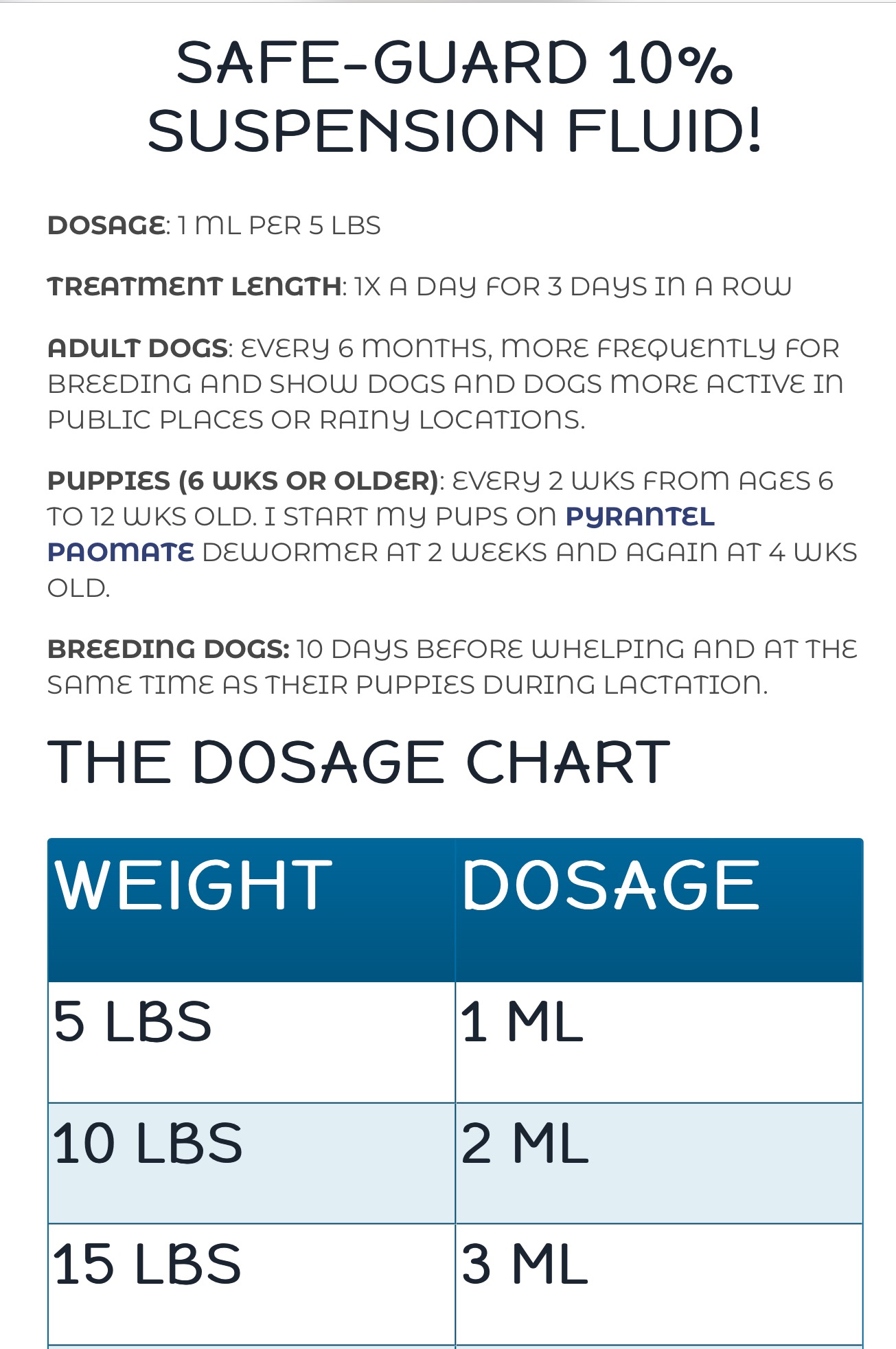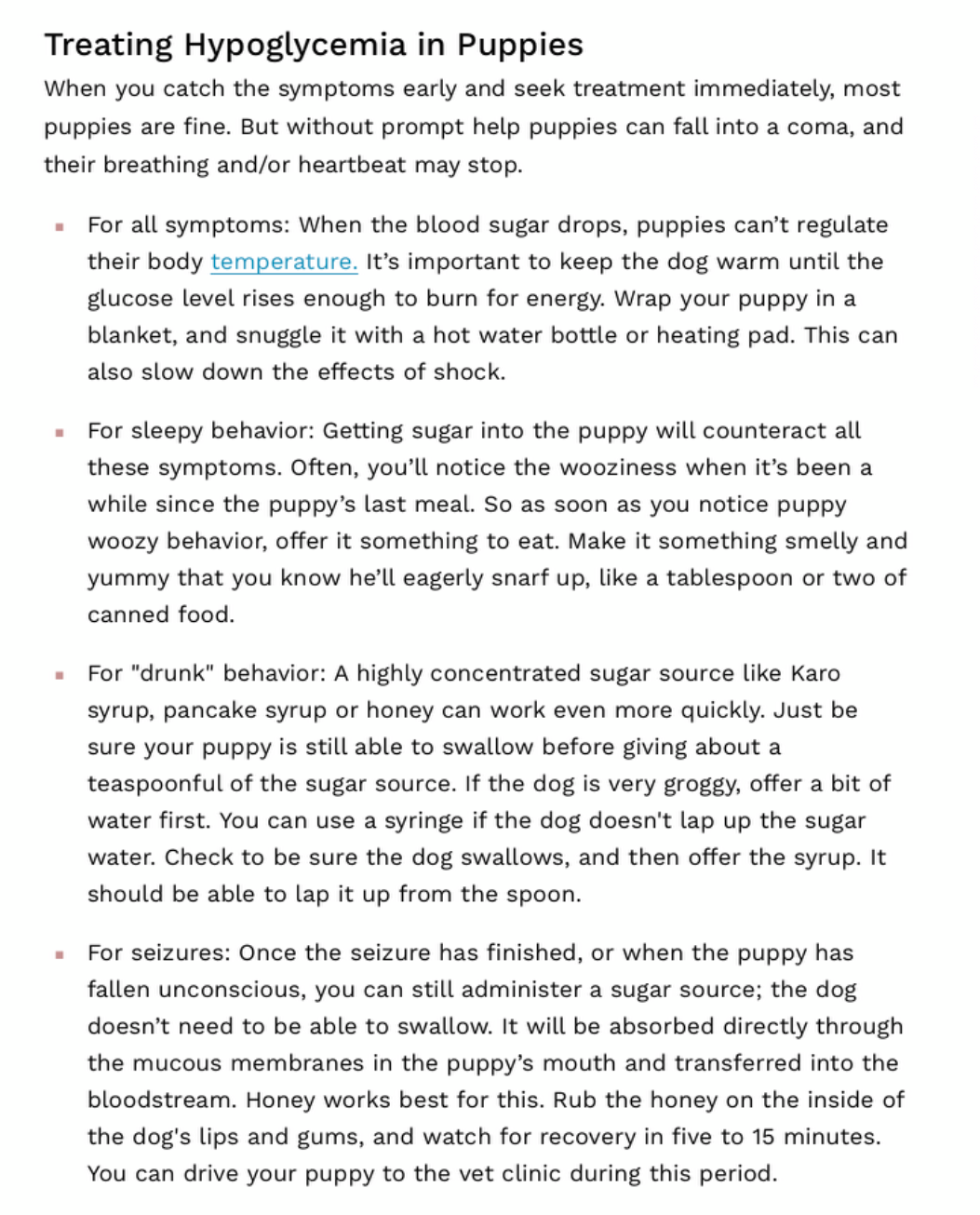


 drivREAD.READ.READ.READ.
drivREAD.READ.READ.READ.
Everyone must read this before buying a puppy or small dog!
Vets are letting pups die or putting them to sleep ..saying they are hydro when they are sugar crashing...these vets do not know how to treat or recognize this in small dogs... so please read this before buying one.
The Dangers of Hypoglycemia in Small Dogs and How to Prevent It
Hypoglycemia for small dogs is one of the most dangerous and deadly conditions that a toy breed puppy can encounter.
I’ve seen too many cases where a new owner is not properly educated about hypoglycemia in small dogs, and the puppy dies because the owner did not know what to do.
This post does not only apply to puppies, but adult toy breed dogs as well. Hypoglycemia can occur in adult dogs if you are not careful. I feel this is THE most important piece of information that any new owner should have when it comes to a puppy’s health. It should be MANDATORY that anybody thinking of buying a toy breed dog read this article before they bring their puppy home. It could save your dog’s life!
First off, Hypoglycemia is basically a term that describes a condition in a dog where the concentration of glucose (sugar) suddenly drops. Glucose is used as a primary source of energy in all dogs.
Small breed dogs, especially puppies, are extremely prone to this condition. The younger the puppy the more chances they have of becoming hypoglycemic. On a side not, I do not recommend buying a puppy from any breeder that releases their pups earlier than 10 weeks of age. 12 weeks would be preferable. Okay, back to the subject at hand. Small breed puppies obviously have less muscle mass than a breed such as a Labrador. When I mention small breeds, I’m referring to dogs such as Yorkies, Shih Tzu’s, Chihuahua’s, Pomeranians, etc.
With the low amount of muscle mass that these breeds have, retaining proper glucose levels is tougher. This is why smaller dogs are more susceptible to hypoglycemia.
As long as your puppy or dog eats on a regular basis they should not have any troubles with this deadly condition. However, if your puppy even misses one meal, they could fall victim to hypoglycemia. Furthermore, the following could speed up the onset of hypoglycemia even further:
1.Stress
2.Change in diet
3.Infections
4.Poor Nutrition
5.Low body temperature
The signs to look out for if you suspect your dog is becoming hypoglycemic are:
laziness, lethargic, shivering, non-responsive, stumbling, and worst of all, comatose.
Checking your dog’s gums is also an excellent method in detecting hypoglycemia. A healthy dog should have warm and pink gums. If your dog’s gums are cold and white, they are most likely in a hypoglycemic state.
If you notice your dog experience any of these symptoms, IMMEDIATELY feed them a couple finger full doses of glucose.
(There are some products that you can buy that are made for this purpose, such as Nutri-Stat or Nutra-Cal.)
I’ve also used Karo Syrup which you can find in your local grocery store. Simply place a dab on your finger tip, and scrape the syrup on the back of the top row of teeth. I would repeat this a couple times.
Some dogs may recover within 10 -20 minutes, while others may take hours.
If you do not see any improvement in their condition within the first 30 minutes, immediately take your dog to the animal hospital.
Raising a smaller dog should be a very fun and rewarding experience. With some proper education beforehand, the process will go a lot smoother and ensure that your puppy grows up healthy. Just remember that hypoglycemia can be prevented by:
1. Keeping a close eye on your puppy’s condition at all times.
2. Proper feeding.
3. Proper rest.
If you plan to take your puppy out to play, give a small amount of glucose, or if he has had lots of romping and play time, a small dollop of glucose on your finger for him to lick off, wont hurt and may keep him from having low glucose episodes.
With this information, you should be properly guarded against your dog falling victim to hypoglycemia.
However, always consult a vet for any advice you need for your dog. You can read a more detailed article on hypoglycemia and small breed puppy care here.
*Credit - Sandy K.
I added a few of my own recommendations as well. -Nayda B.e your puppy to the vet clinic during this period.
The single biggest killer of puppies is cold. New born puppies can’t regulate the temperature for the first week, So they have to have a source of heat keep them from getting cold. Puppies snuggle up to mother and keep warm but they also get pushed away from mother by competing pups. Smaller or weaker pups can end up in an area where there’s no heat and lose body temperature quickly. A cold puppy will become lethargic and die in a matter of an hour or two. Small and weak puppies are the most vulnerable.
If you have a lethargic puppy. Put your pinky finger in its mouth. It should be nice and warm and the puppy should start suckling. If it is cold or there is no suckle response first order is to get it’s body temperature back up. The temptation is to get a bottle and feed some warm milk. Don’t. Putting milk on board will stress the puppy further. Energy that the puppy could used to get warm will be diverted to digest milk. A puppy can go with out food for 24hrs, but cold can kill in under an hour.
An Incubator with 105 F regulated temperature will bring a puppy from the brink of death to a squirming puppy who wants to nurse with in an hour. I have saved many puppies this way.
You can heat towels in the dryer or rice bags in the microwave. Both will work in a pinch. But the best way is an incubator. You can leave a weak puppy in an incubator overnight and know it will be kept at exactly the right temperature. I have had neonatal’s in an incubator for a week. Tube feed and raised them to healthy beautiful puppies.
Puppy Information
Newborn puppies need warmth more than food. At birth the puppy’s body temperature is the same as the mother’s, after delivery the core temperature will drops several degrees the body (rectal) temperature should fall between 95° and 99°F. If it drops below 94°F, your puppy could be facing life-threatening hypothermia. Puppies depend on their mom to maintain their body temperature. Without external heat, it doesn’t take long for a puppy to become chilled. Chilling gravely reduces the puppy’s metabolism. Newborn puppies can’t generate their own body heat until they develop the shiver reflex at around two and half weeks. Hypothermia is the single greatest problem for infant puppies. Low puppy temperatures for the first few weeks is also one of the biggest reasons for herpesvirus ** being able to successfully infect a litter.
It is very important to keep puppies warm for the first week to ten days of age. If the puppies are not gaining weight and suckling properly, this should be considered as abnormal and be investigated. Most health young puppies will double their birth weight in the first 7 to 10 days of birth and then double it again within the next three weeks. It is always a good idea to keep young puppies that are sick and nursing in a warm area, the puppies resistance is weaken when exposed to chilling conditions. If they crawl away from the rest of the puppy group, it will increase the cold stress and exacerbate the onset of their deterioration. Besides keeping all he young puppies warm, the weak, less active, sick or fading puppies need special care to ensure their best chance for survival. Remember the loss of body heat and chilling is a common reason for rapid decline in sick puppies.
Distressed Puppies
Despite our instinct to want to immediately feed a puppy in trouble, warmth is far more critical than food. Cold puppies can’t nurse or digest food. Their heart rates drop, and the circulatory and respiratory systems collapse. They won’t last long under these conditions. Warming a chilled puppy too quickly can also be fatal. Puppies that have a low body temperature should be warmed slowly over a few hours to a normal temperature of about 97°F. A normal body temperature should be reached before feeding these puppies.
When you’re ready to set up the nest, place clean towels or puppy pads in the Incubator Care Unit. If the puppies are open-mouth panting, the box is too warm. Your litter can help you gauge their comfort level easier than just one puppy can. Chilled puppies will cry and gather in a pile trying to keep each other warm. Puppies that are too warm will separate and sleep apart.
Dangers
Manufacturers of heating pads made for people do not recommend them being used on animals. Even on the low setting temperatures can get dangerously hot. Most heating pads made for people will shut themselves off after a certain time.
Heat lamps will warm them up, but can also dehydrate the puppies as well as being hard to regulate their temperature. The puppies can easily become overheated with no way to escape using these methods to warm the puppies.
Temperature
Within twenty-four hours being born, there core (rectal) temperature should be 95° to 97°F Their temperature steadily increases, until at 3 weeks of age the rectal temperature is 98° to 100°F Eventually they’ll sustain a normal temperature of 101.5°F.
During the first week of life, puppies do not have the capacity to constrict the blood vessels at the surface of their skin to retain heat. A newborn is able to maintain a body temperature 10°F to 12°F above his immediate surroundings for only short periods. When the heat source, (the mother, other puppies, blankets and Incubator Care Unit), is removed for 30 minutes or so in a 72°F room the puppies core temperature can quickly falls to 94°F or below where the puppy faces life-threatening hypothermia.
The air temperature in the Incubator Care Unit should be kept at 85° to 90°F for the first week. The second week, reduce the air temperature to 80°F. Then reduce the temperature gradually so that it’s about 70°F when the litter is 6 weeks old.
| Puppy’s Age | Approximate Room Temperature | Approximate Core Temperature |
|---|---|---|
| Newborn to 7 days | 90°F | 96°F |
| Day 8 to 14 | 85°F | |
| Day 15 to 21 | 80°F | |
| Day 22 to 28 | 72°F | 99°F |
Relative humidity of 55-65%
Use common sense. If the puppies are piled on top of each other all the time, they are cold. If the puppies are spread far apart and panting, they are too warm. If they lay next to each other, the temperature is fine.
Keep the moisture in a range comfortable for humans. In a homemade box area, a towel moistened with water and placed over the box will help add moisture.
** Canine herpes virus (CHV)
Canine herpes virus (CHV), also known as “fading puppy syndrome,” is a viral infection that affects the reproductive organs of adult dogs. While adult dogs infected with CHV usually do not show any symptoms, the infection is the leading cause of death in newborn puppies. One puppy in a litter may be affected, and death may occur abruptly, with little or no warning, or an entire litter may perish within a 24-hour period. If the disease is contracted when the puppies are older than three weeks, it is often less severe. Older puppies have a much better chance of survival, but may have long-term effects of a persistent CHV infection.
Anytime newborn puppies are observed to be unwell or “fading,” it is crucial that you contact the vet. If CHV is confirmed, treatment can begin with antiviral medication and supportive care. It is also important to keep puppies warm, as the virus requires a low temperature to survive. Unfortunately, death often occurs rapidly in CHV-infected puppies despite good care.
Symptoms:
- Sudden death of newborn puppy
- Weakness, lethargy, crying
- Lack of suckle reflex/appetite
- Painful abdomen, bruising of the abdomen
- Soft, yellow/green feces
- Respiratory difficulty, nasal discharge
- Hemorrhages, such as nose bleeds and small bruises
- Older puppies may develop nervous system abnormalities, including blindness and seizures
- If you think your dog or puppies may have canine herpes, seek veterinary care immediately!
How Is Canine Herpes Transmitted?
Canine herpes virus lives in the reproductive and respiratory tracts of male and female dogs. In adults, the disease is transmitted via aerosol and direct contact, including sneezing, coughing, nosing, sniffing, licking and sexual activities between an infected and an uninfected dog. Puppies usually contract the disease in the birth canal or from nasal and oral secretions of the mother shortly after birth. Puppies can also spread the virus to one another. Just because one puppy in a litter is infected with CHV does not mean they all are.
Kitten Information
An incubator is especially important if the kitten is extremely small, not completely developed, in distress, or if you cannot consistently control the environment and temperature in the area. Incubator Care Unit is ideal to provide a safe, clean, warm, dry place for kittens to get the tremendous amount of sleep they need to grow and develop in the critical first few weeks. Warmth is vital in the first few weeks of a kitten’s life, as they are not able to shiver, and you cannot tell when they are cold. The Incubator Care Unit should be in a quiet, private, draft-free location.
Air temperature for young kittens
| Kitten’s Age | Approximate Room Temperature |
|---|---|
| First 7 days | 90°F |
| Day 8 to 14 | 85°F |
| Day 15 to 28 | 80°F |
| Day 29 to 35 | 75°F |
| Day 35 and on | 70°F |
click here to go back to HOME PAGE
